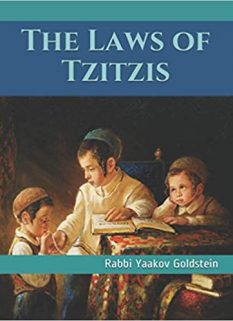*The article below is an excerpt from the above Sefer
*As an Amazon Associate I earn from qualifying purchases.
Chapter 39: The reward and spiritual elevation effected by the quality of the kavana
1. The difference between the service of man versus that of angels:
- Angels are like animals: The angels are referred to as animals, both wild [Chayos] and domestic, as the verse states “Upnei Aryeh El Hayamin, Upnei Shur Mihasmol.” The reason for this is because the angels do not have freedom of choice, and their love and fear are naturally born within them as written in the Raya Mehemna Parshas Pinchas.
- Tzadikim are in Beriyah while angels Yetzirah: It is for this reason that the Tzadikim reach higher levels than the angels, as is seen from the fact that the abode of the Tzadikim in the upper world is in the world of Beriya, while the angels dwell in the world of Yetzirah.
- Gloss-Some angels live in Beriyah: This, however, only refers to the regular angels called Chayos Tiviyim. However, there do exist angels called Chayos Sichliyim which reside in the world of Beriya, as their Avoda is to serve Hashem with intellectual love and fear.
- [To properly understand why the Tzadikim dwell in Beriya while the angels in Yetzirah, we must first introduce the difference between the two worlds.]
- Midos are revealed in Yetzirah: The difference between the worlds of Beriya and Yetzirah is the level of G-dly revelation they contain. In the world of Yetzirah, the Midos and emotional attributes of Ein Sof shine, as it states in the Tikunim and Eitz Chaim that the six Sefiros dwell in Yetzirah.
- Angels in Yetzirah serve Hashem with emotions: This revelation of the Middos in Yetzirah is expressed in the creations and angels of that world through their service of love, fear, and trepidation. This is the service of the angel’s, day and night without break.
- The Avoda of the camp of Gavriel and Michael: The entire camp of Gavriel stands by the left with constant fear and trepidation. The entire camp of Michael stands by the right and serves with love.
- Chabad is revealed in Beriyah: However, in the world of Beriya shines the Chabad/intellect of the Ein Sof, as it states in Tikkunim that the supernal mother hovers over the three Sefiros in the world of Beriya.
- This intellect is the source of the Middos and is the mother and root of them. Based on the above, it is understood why the world of Beriya is the abode for Tzadikkim, as explained next.
- The world of Beriya is the abode for Tzadikkim who serve Hashem with intellectual love and fear that is born due to contemplation of the greatness of the infinite G-d. This love is called Reusa Deliba.
- Their love is their garments: The fiery love of the heart that they arouse becomes garments for their Neshama/soul in the world of Beriya.
- Gan Eden Haelyon: This abode of the Tzadikim is known as Gan Eden Haelyon as it states in the Zohar.
Related Articles
Daily Tanya Wednesday 13th Tamuz Igeres Hateshuvah Chapter 4 Part 1: Teshuvah Ilah and Tatah
Post Views: 39 Chapter 4 1. Purpose of Repentance and Its Levels Repentance (teshuvah) is essential for spiritual atonement and cleansing of the soul before the Divine. After proper repentance, sacrificial offerings serve as a gift, as described in the Talmud. 2. Understanding True Repentance The main aspect of repentance
Daily Tanya Tuesday 12th Tamuz Igeres Hateshuvah Chapter 3 Part 3: Redeeming Fasts with Charity
Post Views: 83 1. Fasting in our times for rectification of sin: Fasting the full set of fasts for severe sins: One is to fast at least lease one time in his life the number of fasts required for the severe sins that carry a death penalty, such as for
Daily Tanya Monday 11th Tamuz Igeres Hateshuvah Chapter 3 Part 2: Who Should Fast?
Post Views: 106 11th Tamuz 1. Who Should Fast Frequent fasting is appropriate only for those who are healthy and strong, much like in earlier generations. Those whose health may be harmed by numerous fasts should avoid them, even for severe sins. 2. Limitations on Fasting Even in past generations,
Daily Tanya Thursday 7th Tamuz Igeres Hateshuvah Chapter 1 Part 1: The types of sins and their atonements
Post Views: 188 Chapter 1: 7th Tamuz 1. Types of Atonement There are three types of atonement, each corresponding to a category of transgression. Repentance (teshuvah) is required in all cases. 2. Atonement for Positive Commandments If one fails to fulfill a positive commandment and repents, forgiveness is immediate. However,
Daily Tanya Wednesday 6th Tamuz Shaar Hayichud Viemuna Chapter 12 Part 2: The 22 letters of the Hebrew alphabet
Post Views: 196 1. Reflective Nature of Divine Light Just as moonlight is a reflection of sunlight, the substituted letters are a reflection of the divine energy that sustains creation. 2. The Letters as Channels of Life-Force The letters of the divine utterances are channels for the life-force, light, and
Daily Tanya Tuesday 5th Tamuz Shaar Hayichud Viemuna Chapter 12 Part 1: Creation through the letters
Post Views: 194 Chapter 12: Creation through the letters 5th Tamuz 1. Creation Through Combinations Creatures are formed through various combinations, substitutions, and transpositions of the twenty-two letters. Changing the arrangement of letters results in new forms and beings. 2. Unique Roles of Individual Letters Each letter has a unique


 Donate
Donate
Leave A Comment?
You must be logged in to post a comment.